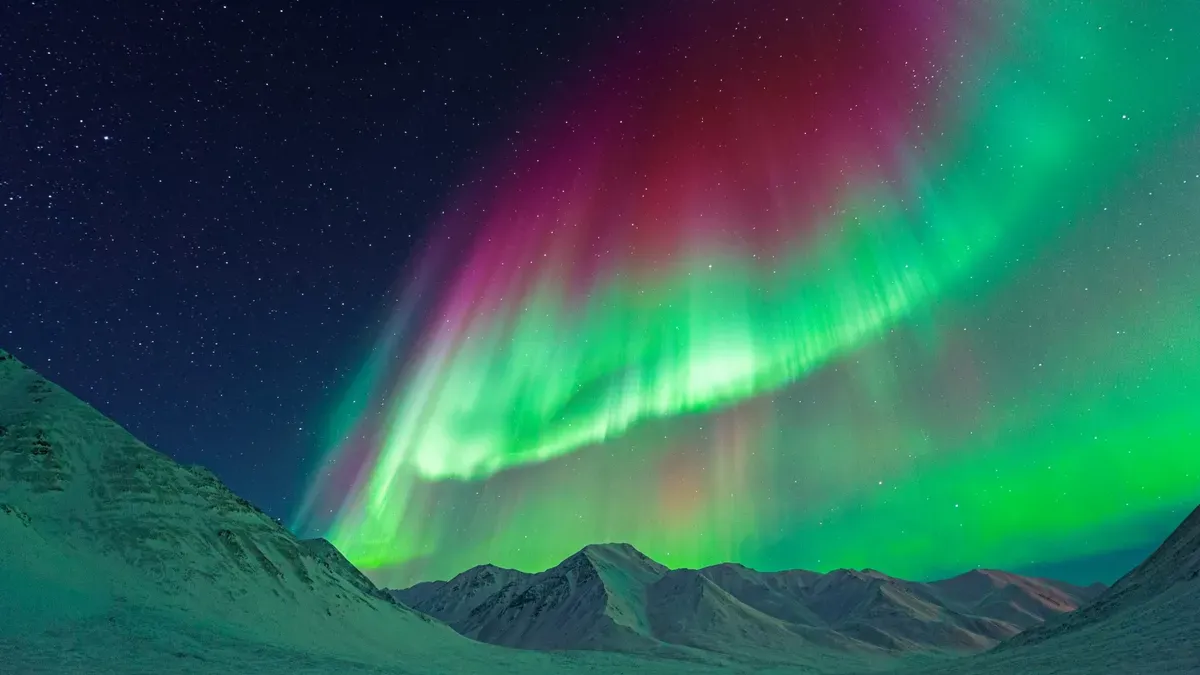Spectacular Northern Lights Expected Tonight (June 1) as Geomagnetic Storm Intensifies
A dazzling display of the northern lights could be visible tonight (June 1), thanks to strong geomagnetic activity currently affecting Earth, as reported by the National Oceanic and Atmospheric Administration (NOAA).
Earlier today, a fast-moving coronal mass ejection (CME) hit Earth’s magnetic field, causing significant disturbances. While this can pose challenges to satellites and communications, it’s excellent news for aurora enthusiasts.
According to the U.K. Met Office, we can expect frequent G1 to G2 geomagnetic storm levels, with possible surges into stronger G3 or even G4 territory between June 1 and 2. NOAA’s Space Weather Prediction Center also forecasts that the Kp index—a scale measuring geomagnetic activity from 0 to 9—could spike to 7.67 in the next 24 hours, signaling enhanced chances of auroral activity.
So, if you’re hoping to catch the northern lights, tonight might be the night to grab your camera and head outside. For the latest updates, you can follow NOAA’s 3-day aurora forecast or tune into an aurora live blog.
Where Are the Best Places to See the Northern Lights Tonight?
Alaska remains the top location for aurora viewing tonight, but if storm conditions strengthen to G3 or G4 levels, the northern lights could stretch much farther south than usual. States like Michigan and Maine may also be treated to the spectacle.
Below is a list of 23 U.S. states that are either partially or entirely within the current potential viewing area, based on NOAA’s predictions. These states are ordered from most to least likely to witness the auroras, based on their proximity to the auroral oval and the amount of land within the viewing zone:
- Alaska
- Montana
- North Dakota
- Minnesota
- Wisconsin
- Michigan
- South Dakota
- Vermont
- New Hampshire
- Maine
- Idaho
- Washington
- Oregon
- New York
- Massachusetts
- Connecticut
- Rhode Island
- Nebraska
- Iowa
- Wyoming
- Illinois
- Indiana
- Pennsylvania
It’s worth noting that auroras can be unpredictable. They may show up in places not forecasted or be fainter than expected. Several environmental factors must align for an ideal viewing experience.
Tips for Viewing the Northern Lights
If you’re located in one of the states listed above, your best chance of spotting the aurora is from a dark, north-facing area far from city lights. However, since daylight hours are long in early June, your viewing window is limited. The best time to try is between 1 a.m. and 2 a.m., when skies are darkest.
To stay updated and improve your chances of catching the auroras, consider using a mobile app tailored to space weather and aurora forecasts. Some reliable apps include:
- My Aurora Forecast & Alerts (iOS & Android) – Ideal for tracking auroras based on your location.
- Space Weather Live (iOS & Android) – Offers in-depth information on current geomagnetic conditions.
With the right timing, location, and a bit of luck, you could witness one of nature’s most awe-inspiring displays tonight.

